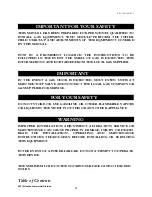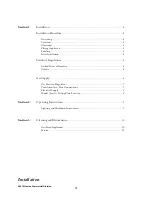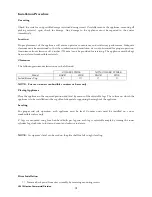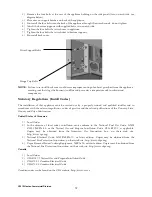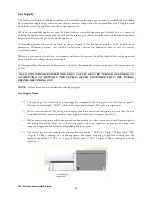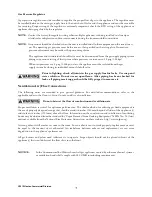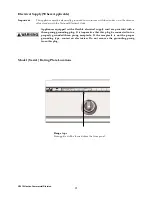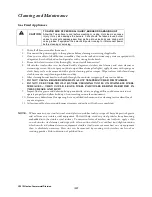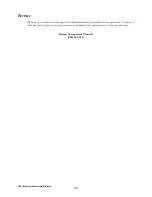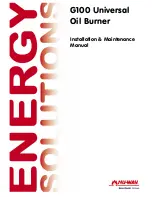
©2015 Hestan Commercial Division
7
Gas Pressure Regulator
A gas pressure regulator must be installed to regulate the proper flow of gas to the appliance. The regulator must
be installed between the main gas supply line to the unit shut off valve and the appliance and must be accessible
for servicing. Proper sizing of the regulator is extremely important, check the BTU rating of the appliance or
appliances being regulated by the regulator.
NOTE:
Contact the factory for regulator sizing when multiple appliances are being installed in a line up or
island suite configuration and are interconnected using the front manifold connections.
NOTE:
Gas pressure should be checked when the unit is installed and all other equipment on the same line is
on. The operating gas pressure must be the same as that specified on the rating plate. If necessary,
pressure adjustment may be made at the pressure regulator.
The appliance and its individual shutoff valve must be disconnected from the gas supply piping system
during any pressure testing of that system where pressures are in excess of .5 psig (3.45kpa).
When test pressures are .5 psig (3.45kpa) or less, the appliance must be isolated from the gas
supply system by closing its individual manual shutoff valve.
Prior to lighting, check all joints in the gas supply line for leaks. Use soap and
water solution. Do not use an open flame. After piping has been checked for
leaks, all piping receiving gas should be fully purged to remove air.
Ventilation Air / Flue Connections
The following notes are intended to give general guidance. For detailed recommendations, refer to the
applicable codes in the Country, State, County and City of installation.
Do not obstruct the flow of combustion and ventilation air.
Proper ventilation is critical for optimum performance. The ideal method of ventilating gas fired equipment is
the use of properly designed canopy that should extend six inches (152mm) beyond all sides of the appliance (s)
and six feet six inches (1981mm) above the floor. Information on the construction and installation of ventilating
hoods may be obtained from the standard for "Vapor Removal from Cooking Equipment," NFPA No. 96 (latest
edition), available from the National Fire Protection Association, on their web site: http://www.nfpa.org/.
A strong exhaust will create a vacuum in the room. For an exhaust vent to work properly, replacement air must
be equal to the amount of air exhausted. An imbalance between exhaust and replacement air can cause
degradation in the appliance’s performance.
All gas burners and pilots need sufficient air to operate. Large objects should not be placed in front of the
appliance(s) that would obstruct the flow of air into the front.
NOTICE:
In the Commonwealth of Massachusetts all gas appliances vented by either mechanical systems
or ventilation hoods shall comply with 248 CMR interlocking requirements.


